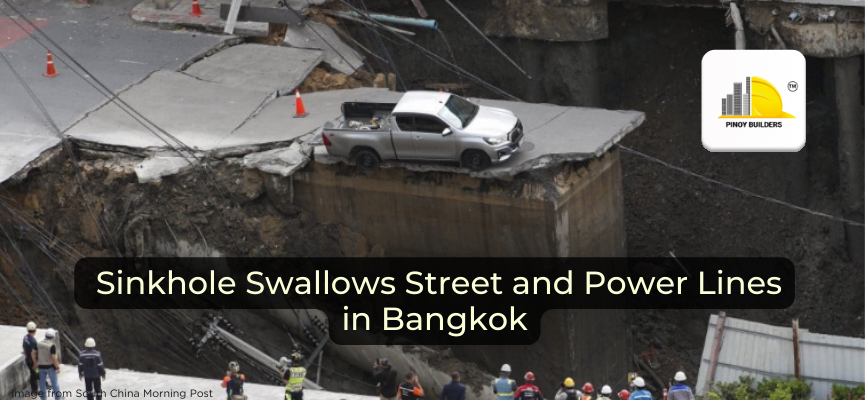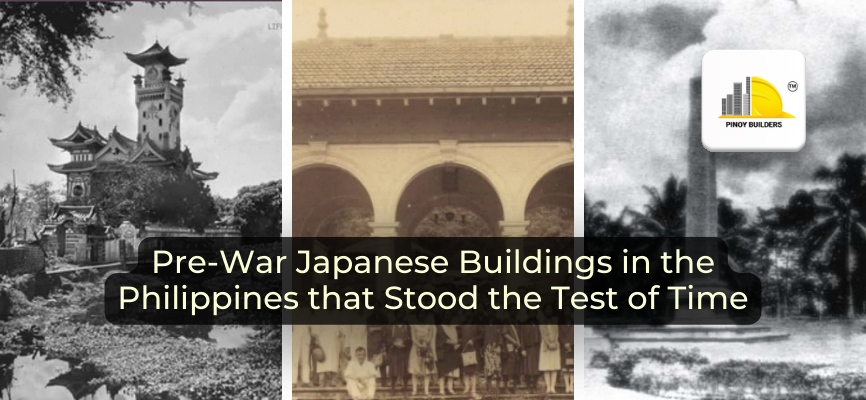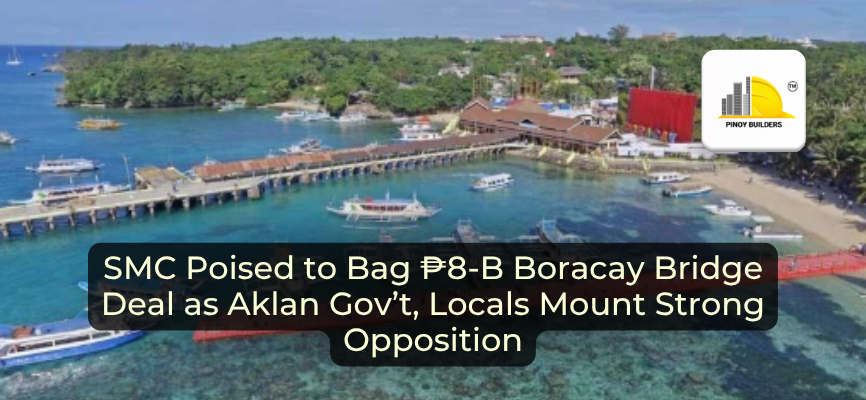A 50-meter-wide sinkhole swallowed part of a busy road in front of Vajira Hospital and a nearby police station in Bangkok on Wednesday. The collapse pulled down power lines, ruptured a water pipe, and left several vehicles stranded near the edge. Authorities confirmed no injuries or fatalities.
The incident caused significant disruption in the area. Traffic slowed to a crawl as emergency crews secured the area, while the Vajira Hospital suspended outpatient services and relocated patients as a precaution.
Police operations at the adjacent station were also adjusted. Photographs are circulated widely online, showing the scale of the damage and vehicles dangerously stranded near the rim of the crater.
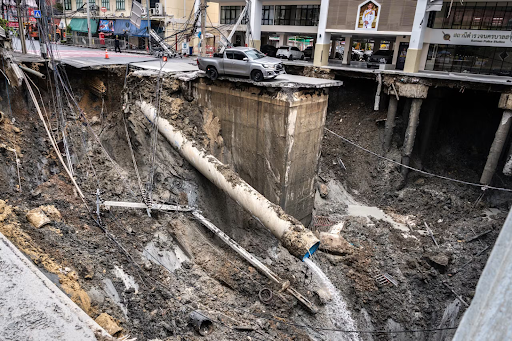
Stabilization Efforts in Progress
Preliminary findings suggest that the hole formed because of a mix of heavy rain and an underground pipe that had been leaking for some time. The city has long struggled with soft soil and water drainage problems, and these conditions make Bangkok more likely to face sudden collapses.
Officials also pointed out that ongoing construction of an underground train line nearby may have contributed to the weakening of the ground and creates the right setting for the road to cave in. Governor Chadchart Sittipunt explained that soil had slipped into the tunnels of a subway project, weakening the ground. He said this process “caused the road surface to collapse” and that ruptured pipes worsened the erosion.
Crews on High Alert
Emergency teams arrived quickly to shut down utilities around the area and prevent more damage. Engineers worked through the day to measure the depth of the crater and determine how to stabilize the soil before more of the road could collapse.
Residents expressed worry about their safety, especially the cracks or shifts spreading under their homes. Local officials assured the public that monitoring and repairs would continue around the clock.
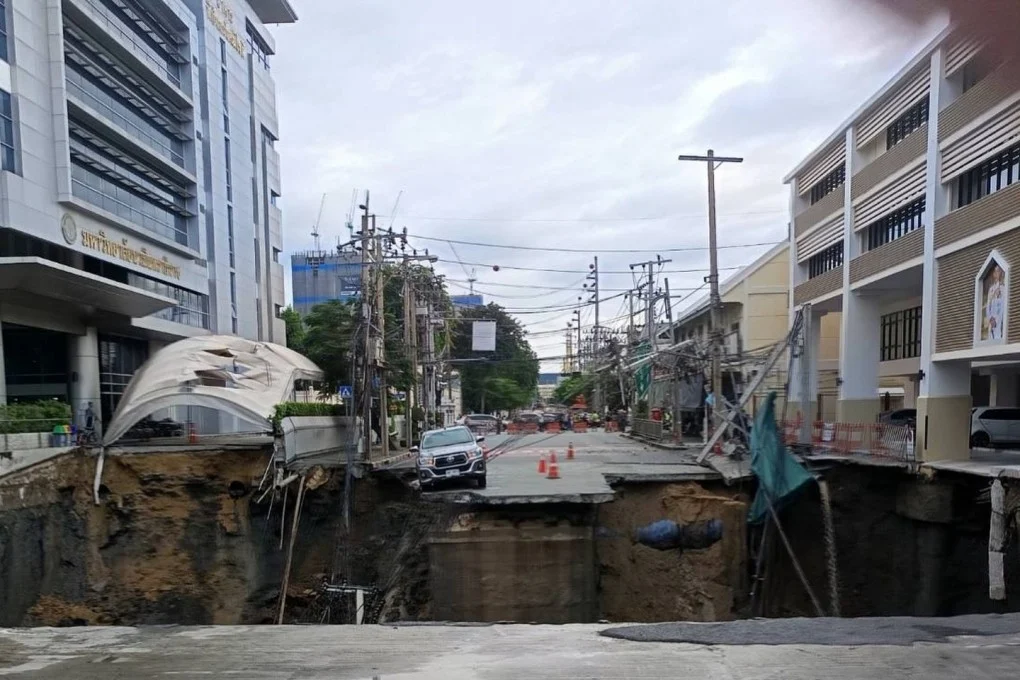
Lessons for the Philippines
Incidents like this highlight risks that are also familiar to Philippine cities. Metro Manila and other urban areas share challenges such as heavy rains, flooding, and aging underground infrastructure. Rapid construction projects and soft soil conditions can also increase the chances of sudden road subsidence.
Urban planners and local governments in the Philippines continue to face the task of upgrading drainage systems, strengthening road foundations, and monitoring underground utilities. Bangkok’s sinkhole underscores the importance of preventive measures, especially in densely populated areas where disruptions can quickly affect hospitals, businesses, and transport networks.
Ongoing Recovery and Impact on the City
While the incident caused no casualties, it revealed how fragile the city’s foundations can be. Bangkok continues to struggle with unstable ground made worse by seasonal flooding and rapid development.
Authorities said road restoration work is in progress and that the site will remain under close observation until it is fully secured. The sinkhole served as another reminder of how vulnerable even the busiest parts of the capital can be to sudden shifts underground.
A video of the sinkhole can be seen here (provided by AccuWeather): https://vt.tiktok.com/ZSD4GmgfT/


